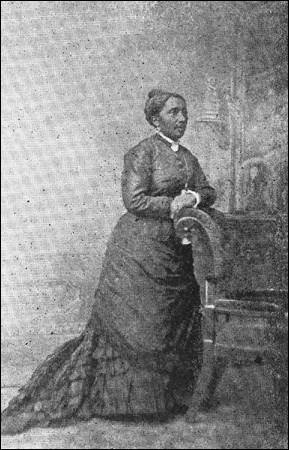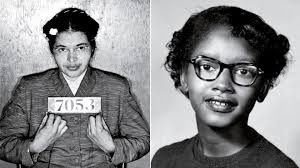The Struggle For Civil Rights: Black Women and the Fight for Access to Public Transportation
From Elizabeth Jennings Graham, Ida B. Wells-Barnett to Claudette Colvin and Rosa Parks, African Americans have been pioneers in ending racial segregation

All Global Research articles can be read in 27 languages by activating the “Translate Website” drop down menu on the top banner of our home page (Desktop version).
***
Many people in the United States are aware of the struggle for Civil Rights led by African Americans during the post-World War II period from the late 1940s right through the early 1970s.
Rosa L. Parks, of Alabama, gained international acclaim for her refusal to yield her seat to a white man on a Montgomery bus on December 1, 1955.
Parks’ stance and the organizing work done by the Women’s Political Council led to the formation of the Montgomery Improvement Association (MIA) which conducted a year-long bus boycott that forced the courts to end segregation practices in the city’s public transportation system. It was the actions organized by the African American community in Montgomery that catapulted a young 26-year-old minister, Dr. Martin Luther King, Jr., into national prominence.
After the developments in Montgomery, the broader movement to end Jim Crow and win universal suffrage gained momentum resulting in numerous court rulings, legislative initiatives and executive orders striking down the legalized “separate but equal” Supreme Court decision of 1896 in the Plessy v. Ferguson case.
Elizabeth Jennings Graham and the Campaign against Segregation in New York
Yet the antecedents for the Montgomery Bus Boycott can be traced back as far as July 1854, when African American teacher and musician, Elizabeth Jennings, attempted to board a horse-driven streetcar in New York City. Jennings, only 24 at the time, was told she could not ride on the car because she was Black.
Jennings immediately objected to the order made by the driver and demanded the right to ride to the First Colored American Congregational Church where she served as the organist. The white driver attempted to remove her physically as she continued to resist. Later a police officer was summoned and the two white men forcefully ejected Jennings from the streetcar.
Her own account which was published in at least two journals, the New York Daily Tribune and Frederick Douglass’s papers, Jennings emphasized:
“I…told him I was a respectable person, born and raised in New York, did not know where he was born, that I had never been insulted before while going to church and that he was a good for nothing impudent fellow for insulting decent persons while on their way to church.”
Jennings’ father, Thomas L. Jennings, was a Free African who had built a skills trade as a tailor. He had gained enormous stature in the New York Black community due to his successful efforts to purchase the freedom of Elizabeth’s mother, of the same name, from enslavement. Thomas L. Jennings supported his daughter Elizabeth in her effort to acquire justice.
At this time in New York City, the omnibuses and streetcars were owned by private corporations. Many of the companies would not allow African Americans to ride or if they did, maintained strict segregationist policies.
An article published in the New York Tribune in February 1855 about the incident involving Jennings said:
“The conductor undertook to get her off, first alleging the car was full, when that was shown to be false. He pretended the other passengers were displeased at her presence. But [when] she insisted on her rights, he took hold of her by force to expel her. She resisted. The conductor got her down on the platform, jammed her bonnet, soiled her dress and injured her person. Quite a crowd gathered. But she effectually resisted. Finally, after the car had gone on further, with the aid of a policeman they succeeded in removing her.”
The legal case would be decided in 1855 after 24-year-old Attorney Chester A. Arthur argued successfully before Brooklyn Circuit Court Judge William Rockwell who ruled in Jennings’ favor. Arthur would later become Vice-President in 1881 and succeeded James Garfield after his assassination the same year. Jennings was awarded monetary damages for the acts of discrimination and violence by the conductor and policeman.
Nonetheless, it would take another two decades of mass actions and legal work to end segregation completely within the New York transportation system. Rallies were held immediately at the First Colored American Congregational Church after the incident involving Jennings. Eventually in 1874, a Civil Rights Act was passed outlawing segregation in the state of New York.
One account of Jennings’ life after 1855 noted:
“In 1860, Jennings married a man named Charles Graham. Their only son, Thomas J. Graham, fell ill and died in infancy in 1863. Charles passed away a few years later in 1867. Jennings continued to teach, first at the private African Free School and later in the public schools. She also founded the city’s first kindergarten for African American children, operating it from her home just south of Longacre Square (now Times Square). On June 5, 1901, Jennings passed away at age 74 and was buried in Cypress Hills Cemetery alongside Charles and Thomas.”
Legacy Continued for More Than a Century
By 1883, Ida B. Wells-Barnett (image on the right) had become a teacher and journalist in Memphis, Tennessee, a thriving southern municipality with a highly politicized African American population emerging in the aftermath of enslavement and the Civil War. In 1866, white racist mobs would attack the Black community in Memphis prompted by a conflict over the disarmament of Civil War-era militias staffed by African Americans.
Wells had graduated from Rust College in Mississippi where she was born in 1862 as an enslaved African during the Civil War. Her parents and grandparents died during the yellow fever epidemic of the late 1870s which struck Mississippi and southwest Tennessee.
The known introduction of Wells to political agitation occurred in 1883 when she was forcefully ejected from a non-smoking (women’s car) on the Chesapeake, Ohio and Southwestern Railroad Company line. She filed a lawsuit against the company and won an initial judgement. The case was later overturned on appeal. However, Wells would go on to serve as a co-publisher of the Memphis Free Speech and Headlight newspaper which was circulated in large areas throughout Tennessee, Mississippi and Arkansas. She became known nationally after her outspoken response to the lynching of three of her friends in Memphis during 1892. (See this)
Eventually, Wells’ newspaper offices were firebombed while she was out of the city on a speaking tour. Her business partner escaped barely with his life. Later Wells would lead an international campaign against lynching in the U.S.
She would relocate to Chicago and marry Ferdinand Barnett in 1895, an attorney and newspaper publisher as well. Wells became a co-founder of the African American women’s club movement which organized hundreds of thousands across the U.S. within cities and rural areas. Wells became an advocate of women’s suffrage and marched defiantly in the front rows of the 1913 national march in Washington, D.C. demanding the passage of a constitutional amendment guaranteeing the right of women to vote, which was later ratified in 1920.
Wells-Barnett’s political origins are inextricably linked to the struggle for access to public transportation on a non-discriminatory basis. Her efforts would lay the groundwork for the emergence of the modern movements for Civil Rights, Black Power and Self-Determination in the U.S.
Lessons from Rosa Parks and Claudette Colvin: The Struggle for Public Access Continues
Several months prior to the arrest of Rosa L. Parks in Montgomery, Claudette Colvin, a 15-year-old African American youth, was arrested for refusing to yield her seat to a white woman. The act of defiance by Colvin illustrated clearly that the national mood among Black people was shifting during the mid-1950s.
Image below: Rosa Parks and Claudette Colvin
Nevertheless, for various reasons Colvin’s case did not get the attention that Parks’ did in 1955-56, although she was a plaintiff in the landmark case of Browder v. Gayle, which ended segregation in public transportation in Montgomery. Colvin was an adolescent and an expectant mother. Many felt in Montgomery that the case could have been exploited by segregationists. Parks was a 42-year-old seamstress with a long history of political involvement dating back to the defense campaign of the Scottsboro Boys in the early 1930s in Alabama. The young men were falsely charged with rape of two white women on a freight train in 1931. Only a years-long campaign spared them from the electric chairs. (See this)
Later Parks was active around the effort to win justice for a 24-year-old African American woman, Recy Taylor, who was gang raped by six white hoodlums while walking home from church in Abbeville, Alabama in September 1944. Although the whites were never held accountable for their crimes, the incident further exposed the degree of impunity exercised by segregationists during the period. At the time of her arrest, Parks was the secretary of the Montgomery National Association for the Advancement of Colored People (NAACP) and also worked with E.D. Nixon, a leader within the Brotherhood of Sleeping Car Porters, an African American labor organization based in the railroad industry.
Although in the 21st century African Americans ostensibly have fundamental rights to public access and due process, the inequalities of national oppression persist. Municipalities and rural areas are facing even deeper cuts in public services amid the rising gap between the wealthy and the working class. These inequalities are more pronounced when race and nationality are taken into consideration.
Today the struggle for access must encompass the demands related to the need to increase funding for public transportation. Public transportation ranks among other major necessities which must be won by the people including the right to housing, water, utilities, education, environmental quality along with freedom from racist violence and state repression.
*
Note to readers: please click the share buttons below. Forward this article to your email lists. Crosspost on your blog site, internet forums. etc.
Abayomi Azikiwe is the editor of Pan-African News Wire. He is a frequent contributor to Global Research.
All images in this article are from the author



